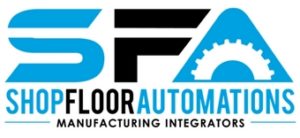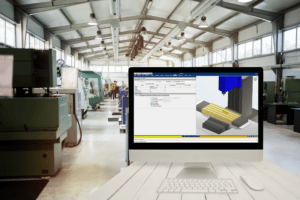Whether you have seven machines or 70 pieces of equipment on your floor, there are best practices that manufacturers across industries can apply to get the most out of your machine monitoring journey. As a top implementer and supporter of equipment monitoring software, Shop Floor Automations (SFA) has helped hundreds of manufacturers throughout North America benefit from increased shop floor data visibility. Here’s our top three recommendations to follow:
- Begin with the end in mind. How will you gauge success for your team using machine monitoring, e.g. less downtime, decreased cycle time, greater productivity? While you may uncover more wins throughout your machine monitoring journey, setting 1-2 initial goals you aim to achieve with your new equipment monitoring software will increase your chances of realistically accomplishing them within your target time frame.
- Start small. As a relatively simple software to install, machine monitoring can be tempting to roll out to all your equipment immediately. Resist the urge. Large volumes of data can quickly overwhelm your resources, particularly as you’re just learning and configuring the application. Instead, establish a pilot program among a few key pieces of machinery over a particular time frame. You can install the DataXchange equipment monitoring service, for example, on one computer, like a desktop or server operating system, to collect and transmit your machine data to the cloud securely. Then the application can be installed on the PC of each user. All of the equipment in your pilot program will need to be connected to the network and DataXchange, and you’ll need to do the same for the Operator Data Interface (ODI) of the machine monitoring solution if you’re looking to have operators enter downtime reason codes, scrap part counts or send an e-mail. Once you’ve fine-tuned the program for the pilot group, you can easily expand it to the rest of your floor and other locations.
- Involve all. Machine operators, maintenance, engineering, quality, all the way through management and executive leadership should take part in the machine monitoring undertaking. The engineers at one aerospace company leveraged machine monitoring to track probing adjustments made to work offsets to begin building a historical reference. This way they can check what change to the offset may have had on a nonconforming part.
Once you’ve fine-tuned your machine monitoring program, like DataXchange, for a pilot group of equipment, you can easily expand it to the rest of your floor and other locations.
By pulling in tool numbers, tool life, maximum tool life, the maximum load, average load and average and maximum vibration – and applying custom variables to know how far and how long that tool is running – the team better understands the result if something was changed to see if it made the output better, or if the machine is running less or more. Today the manufacturer continues to expand its usage of the system, including setting a monthly cadence to verify part standards in ERP to actual cycle times, to meet the needs of its C-suite. By involving each stakeholder, you widen the chance of adoption success as well as new potential opportunities for improvement.
These three best practices are just the beginning of your machine monitoring voyage toward improved profitability. To determine the best approach to implement machine monitoring for your business, contact an automation expert at SFA today.





